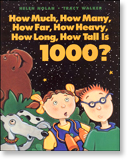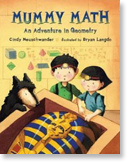Many elementary teachers use word walls in the classroom. A word wall is an organized collection of words displayed in a classroom. Word walls provide easy access to words students need. The specific organization of the word wall will match the teacher’s purpose: sight words organized by alphabet letter, unit-specific words, new vocabulary words, etc. The most helpful word walls grow and change throughout the year and are used as a learning reference.
We just added word walls to our strategy library, and I wanted to share some ideas for using word walls in math, and also a few suggestions for using children’s books to help build word walls (thanks, Maria Salvadore!).
Number sense, concepts, and operations word wall
The purpose of the mathematics word wall is to identify words and phrases that students need to understand and use so as to make good progress in mathematics. Mathematical language is crucial to children’s development of thinking. When students have the vocabulary to talk about math concepts and skills, they can make greater progress in their understanding.
This PDF from Broward County Schools shows several visual examples of math words for a word wall. The examples range from even and odd to measurement, algebraic thinking, and data analysis.
More ideas for word walls in math
Many teachers are familiar with basic word wall strategies including the use of a flashlight (to put the light on words) and a fly swatter (to highlight words). Teachers are also familiar with tested favorites like bingo; I Have, Who Has; and Mind Reader, but they really wanted other ideas. This document , by Dr. Deborah Wahlstrom, shares additional ways to use word walls with mathematics content.
Ideas for using children’s books to build math word walls from Maria Salvadore

Terms and comparisons to describe numbers are presented in an engaging story from which word wall content could be developed and expanded.

Basic geometry is introduced in this story about children who accompany their parents on a trip to Egypt. A word wall of geometric shapes and terms would enhance a math study.

This seeming simple counting book represents a spectrum of math concepts including patterns, addition, computation, and more. Word walls may be made of math functions illuminated or inspired by this book.
About the Author
Along with her background as a professor, researcher, writer, and teacher, Joanne Meier is a mom. Join Joanne as she shares her experiences raising her own young readers, and guides parents and teachers on the best practices in reading.

